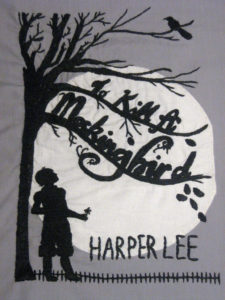 Good morning, class.
Good morning, class.
I am officially halfway through the list! And To Kill a Mockingbird is an incredible book to cherish the milestone.
Written by Harper Lee and published in 1960, in the thick of the Civil Rights Movement, To Kill a Mockingbird is a racially-charged courtroom drama taking place in a small Alabama town. Scout Finch tells the story of her childhood in the mid-1930s, as her single father Atticus defends a black man charged with the rape of a young white woman. Through Scout, we see the intricacies of Maycomb, Alabama—its strange population, funny traditions, overbearing weather, and painful secrets.
I can’t count all of the reasons To Kill a Mockingbird made the list of books to read before you die. First of all, Harper Lee’s writing is amazing—it rises and falls like the musical twang of Southern culture. The narrative can fool you into thinking it’s random, but it is beautifully structured. Every word is in keeping with the story, the location, the characters . . . the novel feels divine.
Scout and her older brother Jem experience the town of Maycomb as children, which proves both funny and heartbreaking. Their innocence gives them the full spectrum of emotion when it comes to misunderstanding the world of Maycomb—tradition baffles them, racism makes them weep, and adults are the oddest creatures imaginable. Scout in particular has trouble with the entire idea of becoming a “lady,” preferring her overalls and the simpler company of boys to the overly complicated world of tea-time conversation—to hilarious results.
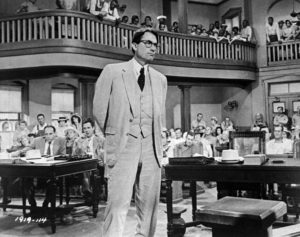
Gregory Peck as Atticus Finch in To Kill a Mockingbird (1962)
But they would be ordinary children without Atticus. While Lee’s newest novel Go Set a Watchman might show a darker version of the character, this Atticus Finch is one of the greatest literary heroes ever written. His moral compass and passion for social justice in the South is combined with his understanding for children and his empathy for victims. Scout and Jem would follow Atticus to the ends of the Earth if he’d let them—he spends most of the novel teaching them respect, explaining injustice, comforting their very real fears, and guiding their moral development, despite opposition he faces at every turn.
The plot is mostly driven by the trial of Tom Robinson, the man accused of rape. Atticus takes the case to try and make change in their town, and realistically, he is met with both opposition and support, temporarily upsetting the fragile dynamics of Maycomb. At one point Atticus compares the case to the Civil War—but, as he explains, “‘This time we aren’t fighting the Yankees, we’re fighting our friends.'”
The trial is viewed from Scout’s perspective, but in little ways, Lee helps Scout see the events from the perspective of the black population in Maycomb—for example, as the kids sneak into the trial, they arrive in the segregated black seating area, where most of Atticus’ supporters sit. A similar scene occurs when Scout and Jem are invited to a black church, and for the first time they experience a new culture from across the train tracks. I think it’s safe to say that this novel is written mostly to a white audience, but for a clear reason—Lee writes to those with the power and privilege to make change, who choose to wait for justice to come instead of act. Slowly, through the novel, it feels like every character either fulfills or rejects Lee’s demand for justice.
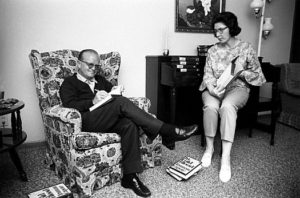
Author Harper Lee with friend and author Truman Capote
That being said, Tom Robinson’s trial takes up only some of the action—it’s almost a secondary plot. The children spend most of their imagination and conversation on Boo Radley, the mysterious, legendary ghost-like figure that inhabits a house down the street. Scout and Jem also spend their summertime with Dill, a boy based on Harper Lee’s real-life friend, fellow author Truman Capote. During the rest of the year, school-time politics take up their day, including condemnable teachers and bullies with racial slurs all within a complicated and questionable Alabama school system. To Scout and Jem, Maycomb is their entire world.
It all bends towards Lee’s message, which is as simple (and yet, as complex) as the novel in full. Things like racism and hatred are hidden in the confines of the heart . . . possibly in the hearts of all people, everywhere. With enough steam to back them, things like racism and hatred have the power to bust out and destroy lives. To destroy a life—or in the words of the novel, to kill a mockingbird, which does nothing but make music—is a sin.
And that’s book #25! Next up is Lord of the Flies by William Golding—like To Kill a Mockingbird, it’s one of those books that everyone else read in high school, but somehow I never did. Therefore, I’ve heard only bad things about it, and I’m ready for it to redeem its bad reputation from the scourge of high school students.
Until then, remember: it’s a sin to kill a mockingbird.
Prof. Jeffrey
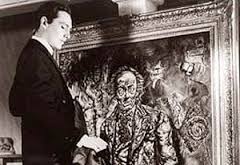
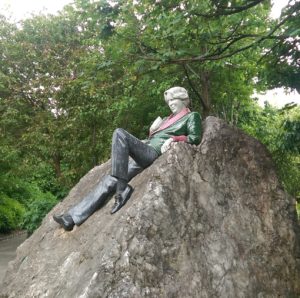
Recent Comments